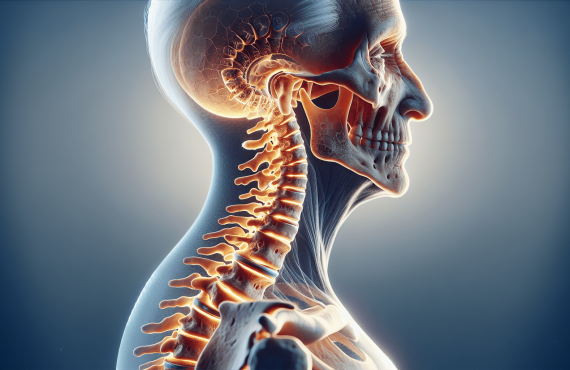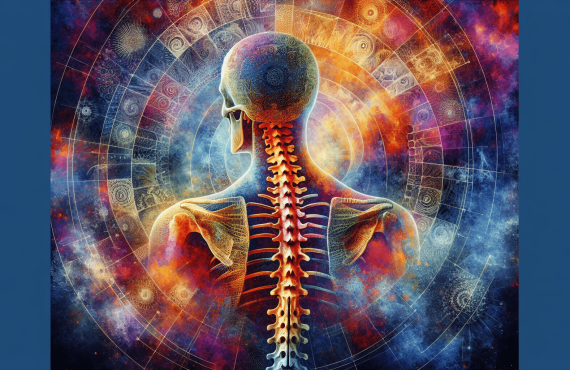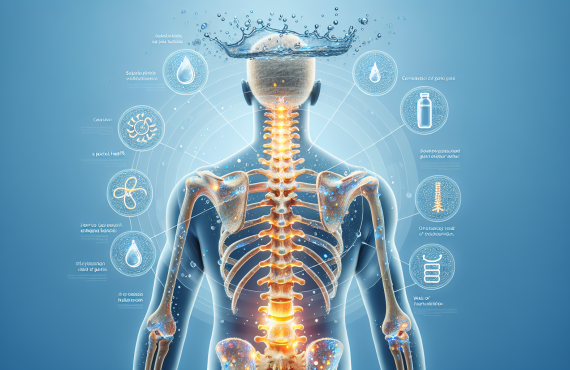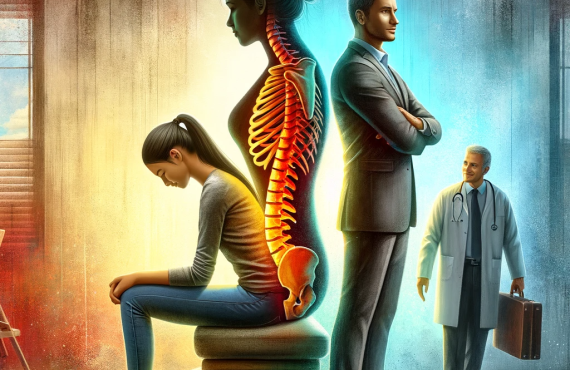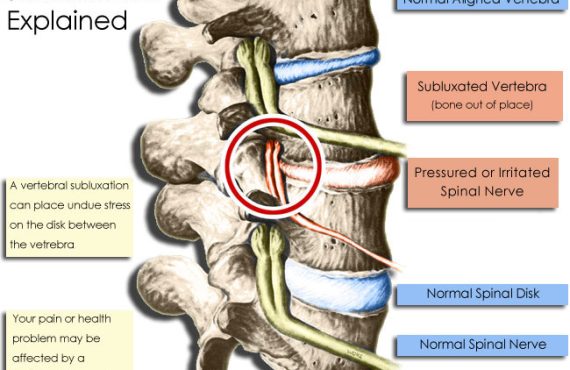Have you ever wondered why your child’s posture might not be quite right or if their fidgeting could be due to something more than just being a bit wiggly? You’re not alone, and this can be a common concern for many parents. Spinal misalignments in children can lead to various issues, and understanding how they occur and what can be done about them is important for your child’s health and development. Let’s navigate this topic with a friendly yet informative approach, shedding light on how to address these concerns.

Table of Contents
Understanding Spinal Misalignments in Children
Children are surprisingly resilient, with their tiny bodies often bouncing back from minor bumps and tumbles. However, their developing spines can sometimes experience misalignments. This topic may not be on the list of conversation at dinner tables, but it’s an essential aspect of pediatric health. A misaligned spine can cause discomfort, impact a child’s ability to concentrate, and potentially lead to long-term issues if not addressed properly.
What Causes Spinal Misalignments?
Spinal misalignments in children can occur due to various reasons. Often, it’s the result of common childhood activities like playing, falling, or even carrying heavy school backpacks. Sometimes, misalignments can stem from congenital issues present at birth or developmental challenges as your little one grows. Even slight misalignments that aren’t immediately obvious can have lasting effects, making it crucial to address these concerns early.
Signs and Symptoms to Look For
Spinal misalignments can be sneaky, often hiding behind symptoms that may not scream “chiropractic issue” at first glance. If your child experiences persistent back pain, uneven shoulders or hips, or difficulty moving their neck from side to side, it might be time to look deeper into their spinal health. Other subtle signs such as a frequently tilted head or an uneven gait could also be indicative of misalignment.
The Importance of Addressing Spinal Health Early
Caring for a child’s spinal health isn’t only about fixing current issues; it’s an investment in their future well-being. Early intervention can stave off a host of problems down the road, from chronic pain to posture-related issues. Ignoring these misalignments might lead to compensatory habits that can further complicate the issue.
Potential Long-term Impacts
Although it might seem inconsequential now, untreated spinal misalignments could have substantial long-term impacts. Poor posture and back pain in childhood can evolve into persistent pain and mobility issues in adulthood. Education and awareness of these potential outcomes are key to preventing them.
The Role of Chiropractic Care
Chiropractic care isn’t just for adults with back pain. Children’s chiropractors use specialized techniques to gently and safely adjust the spine, addressing misalignments that might otherwise go unnoticed. Bringing your child in for a chiropractic evaluation is the first step toward ensuring their spine develops correctly.
Chiropractic Solutions for Children
Chiropractic care can offer a non-invasive, medication-free approach to treating spinal misalignments in children. Practitioners like Dr. Craig Henry and Dr. Aaron Hixon at Henry Chiropractic are well-versed in pediatric chiropractic care, ensuring your child’s visit is both effective and comfortable. Let’s take a closer look at what you can expect when seeking chiropractic treatment for your child.
What Happens During a Pediatric Chiropractic Visit?
A visit to a pediatric chiropractor might seem daunting, but it’s actually a very straightforward process. Initially, the chiropractor will review the child’s medical history and perform a thorough physical examination. They may use gentle techniques to feel for misalignments and observe how your child moves.
Following the exam, chiropractors utilize gentle, precise adjustments to correct misalignments. These adjustments are adapted to a child’s smaller size, ensuring that the process is both safe and comfortable. A good chiropractor will also educate you and your child on exercises and lifestyle modifications that can support their spinal health.
Techniques Used in Pediatric Chiropractic Care
The techniques used by pediatric chiropractors are designed specifically for young patients. Dr. Henry and Dr. Hixon, for example, may use methods like Diversified and Gonstead Spinal Manipulation, tailored to suit children’s needs. These techniques are gentle, aiming to restore proper alignment with minimal force.
Benefits of Chiropractic Adjustments for Children
The benefits of chiropractic care in children can extend beyond addressing spinal misalignments. Regular adjustments can promote better posture, reduce discomfort, and even improve concentration and sleep patterns. Many parents have reported that their child seems more relaxed, comfortable, and active after chiropractic care — a testament to its effectiveness.
Preventive Measures for Maintaining a Healthy Spine
Preventing spinal misalignments involves more than just regular chiropractic visits. It includes creating a lifestyle that supports spinal health through proper habits and ergonomic choices. Here are some tips to help maintain your child’s spinal health.
Ergonomic Backpack Usage
Heavy or improperly worn backpacks can be a significant contributor to spinal misalignments. Ensuring that your child carries their backpack correctly can prevent issues. Look for a backpack with padded shoulder straps and a supportive waist strap, making sure it’s not overloaded with unnecessary items.
Encouraging Good Posture
Good posture is crucial and can help prevent spinal misalignments. Encourage your child to sit and stand with their back straight and shoulders back. Using child-friendly cues like “walk tall like a giraffe” can make learning posture fun and engaging.
The Role of Exercise in Spinal Health
Physical activity is crucial for healthy spine development and alignment. Activities such as swimming, dancing, and gymnastics can strengthen the core muscles, supporting spinal health. Encouraging your child to stay active can help prevent alignment issues and support overall well-being.

When to Seek Professional Help
Timing is critical when addressing spinal misalignments in children. If your child shows any symptoms of misalignment, it’s important to seek the expertise of a professional chiropractor sooner rather than later.
Identifying the Need for Chiropractic Evaluation
As you observe your child, take note of recurring signs such as frequent complaints of back pain, visible posture issues, or a noticeable reduction in their usual physical activity. Abnormalities in their gait or posture should also prompt a visit to your chiropractor.
Finding the Right Chiropractor for Your Child
Choosing the right chiropractic professional is vital to ensure your child’s comfort and safety. Dr. Henry and Dr. Hixon at Henry Chiropractic offer specialized care tailored to the needs of young patients. They provide a welcoming environment aimed at easing any fears and helping your child feel at ease throughout their visit.
Conclusion: Prioritizing Your Child’s Spinal Wellness
As parents, our main goal is to ensure our children grow up healthy, happy, and well-adjusted — in every sense of the word. Understanding and addressing spinal misalignments early can play a significant role in this. By staying informed and pro-active, you can help safeguard your child’s spinal health, setting the stage for a happier and healthier future.
For those concerned about their child’s spinal well-being, you can reach out to Henry Chiropractic, conveniently located at 1823 N 9th Ave, Pensacola, FL. Their skilled professionals, including Dr. Craig Henry and Dr. Aaron Hixon, are ready to provide expert care tailored to your child’s needs.
Contact them at (850) 435-7777 or visit their website at Henry Chiropractic to schedule an appointment or learn more about their services. Let’s give our children the healthy foundation they deserve.
Remember, while children have an amazing capacity for resilience, they rely on us to guide them towards practices that will support healthy growth and development. Addressing and preventing spinal misalignments is a crucial, yet often overlooked, aspect of childhood health.





